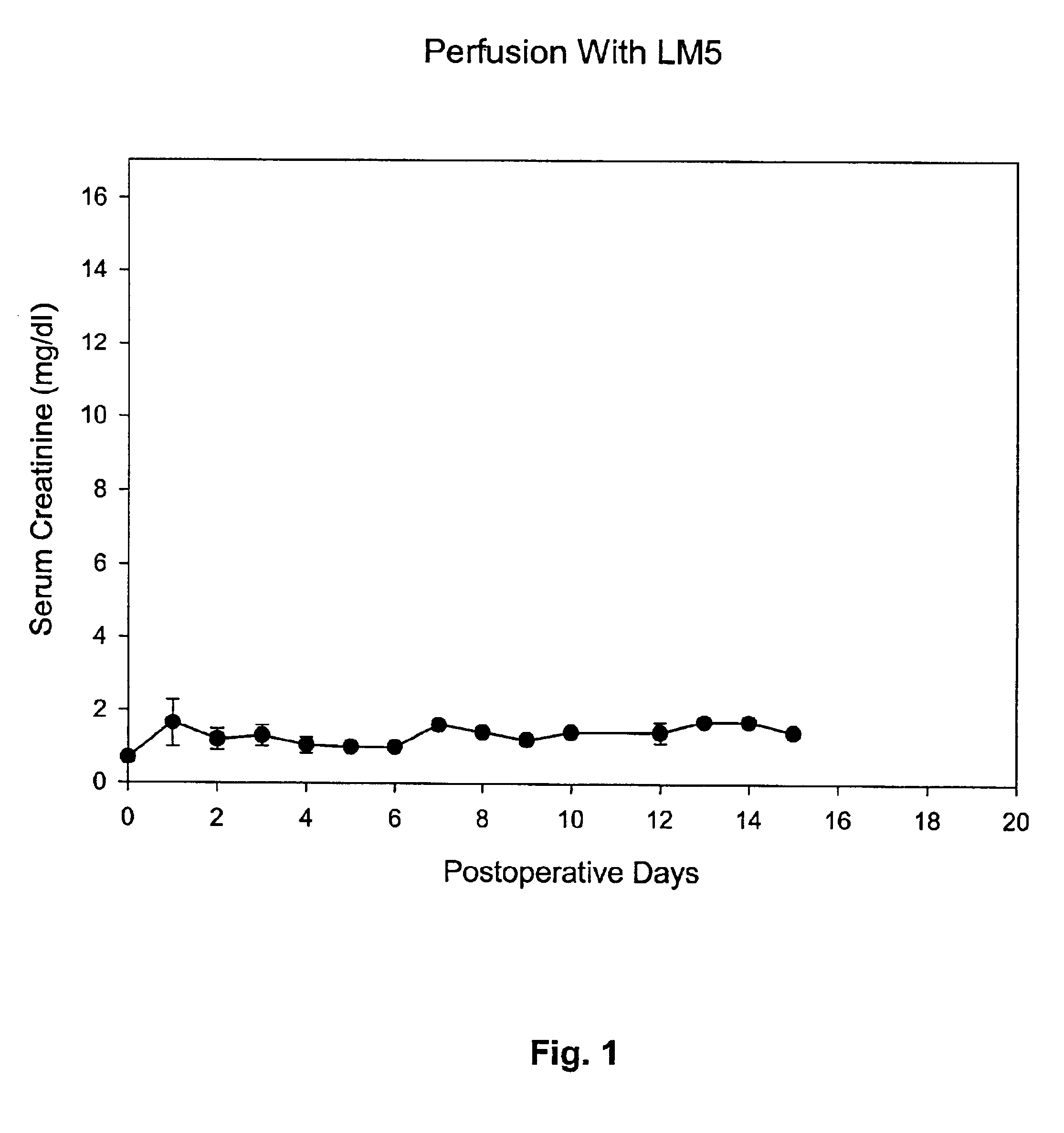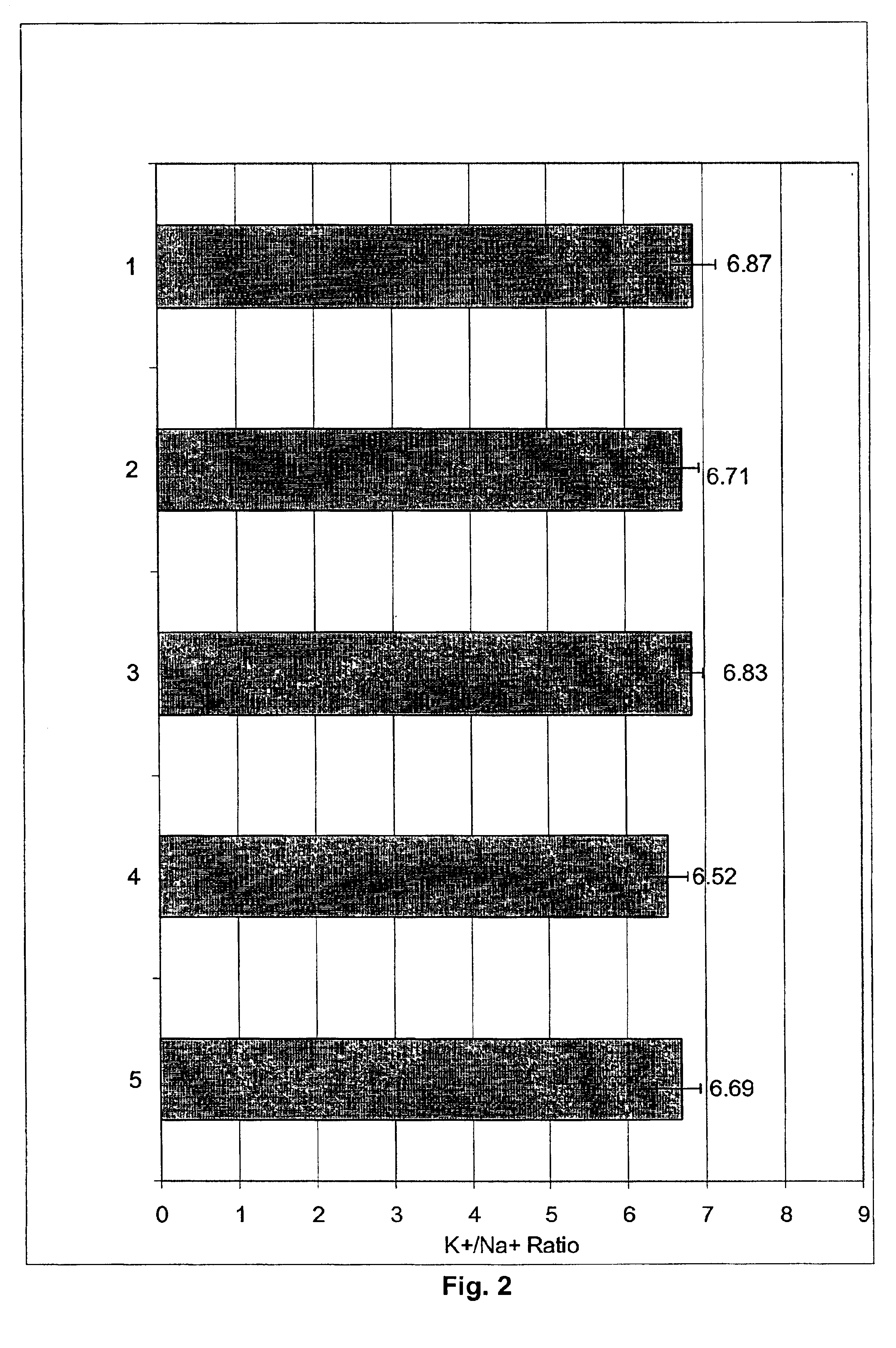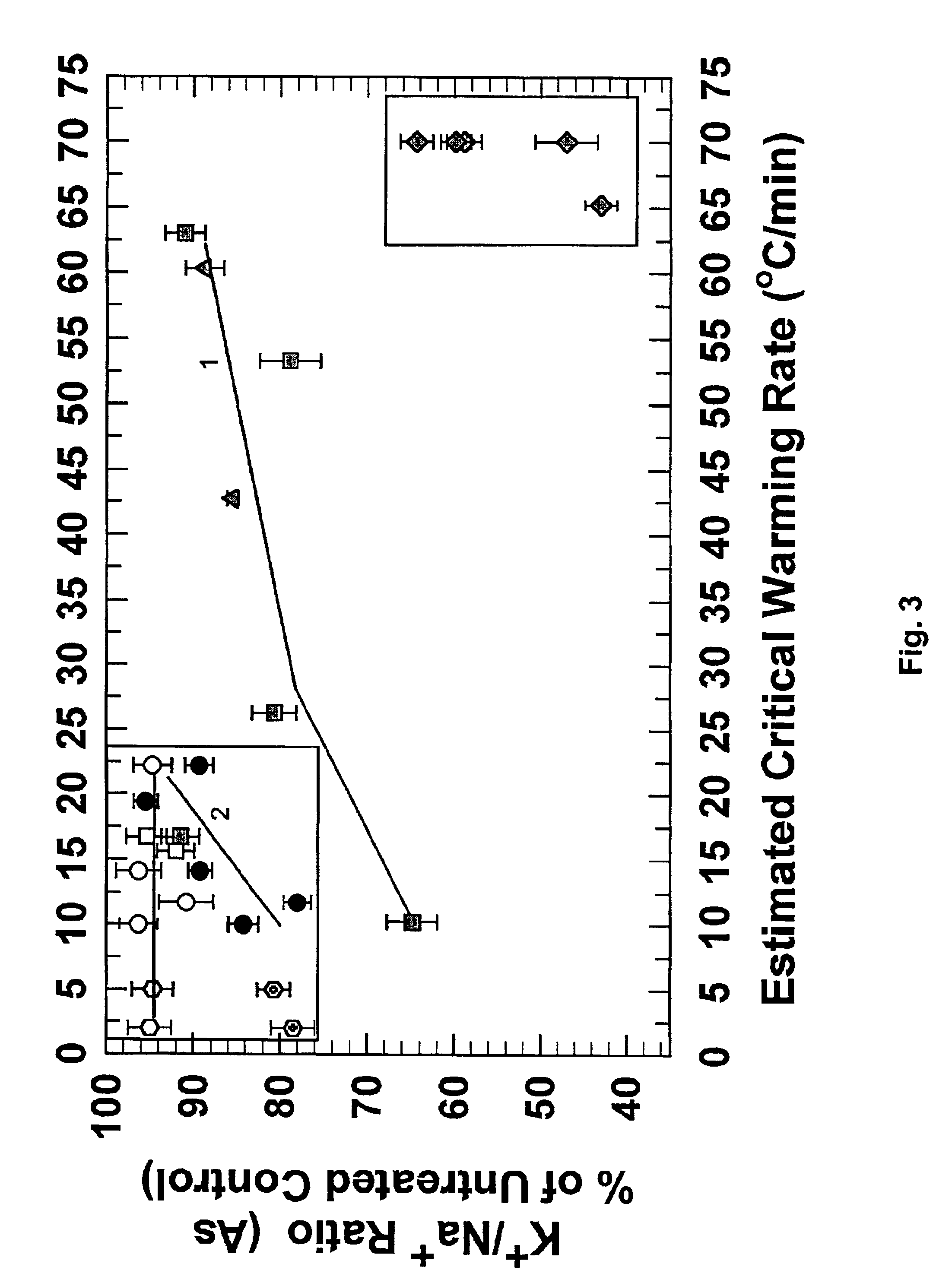Advantageous carrier solution for vitrifiable concentrations of cryoprotectants, and compatible cryoprotectant mixtures
a carrier solution and cryoprotectant technology, applied in the field of cryopreservation, can solve the problems of unpredictable efficacy of carrier solutions for cryoprotectants, poor tissue recovery, and no fully satisfactory results, and achieve excellent results
- Summary
- Abstract
- Description
- Claims
- Application Information
AI Technical Summary
Benefits of technology
Problems solved by technology
Method used
Image
Examples
example 1
Some of the design steps that led to the formulation of the new carrier solution, called LM5, are as follows.
First, there was a need to reduce the concentration of glucose to an unknown extent in order to prevent inactivation of the X1000 antinucleator product described above. Second, the glucose had to be replaced with some other impermeant species. The impermeants of the widely-known and widely-disclosed University of Wisconsin solution (UW Solution, sold under the trademark of VIASPAN) were considered both biologically damaging and prohibitively expensive. Further, impermeants had to be selected that did not share the X1000-inactivating effect of glucose, a formerly unexplored issue. In addition, mannitol, a nominally inert impermeant, was reported by Khirabadi et al. to produce paradoxical vascular damage to the kidney when used in place of glucose in a carrier solution for a VS4-type vitrification solution (Arnaud, Fahy, and Khirabadi, Cryobiology 35:358, 1997). Other impermean...
example 2
Several rabbit kidneys were perfused, at 3.5° C., with LM5 for 5 hours. In addition, during this perfusion, 1% w / v X1000, 1% w / v decaglycerol, and 7% w / v polyvinylpyrrolidone of mean molecular mass 5000 (PVP 5000) were introduced and removed in such a way as to simulate the concentrations of these substances in a typical perfusion with a vitrification solution. The results are shown in FIG. 1, which plots postoperative serum creatinine levels against the postoperative day on which the sample was taken. As can be seen, these kidneys sustained no measurable damage as a result of perfusion with LM5 with and without the cryoprotective polymers. Therefore, LM5 is compatible with both the vascular and the parenchymal components of whole organs.
example 3
Next, several rabbit kidneys were perfused in an LM5 carrier solution with concentrations of cryoprotectants that are sufficient to vitrify at ambient pressures. Calcium and magnesium were gradually removed and added back as cryoprotectant concentrations were increased and then reduced, in order to avoid precipitation of these ions. There were no perfusion problems attributable to any effect of LM5, and survival and life support on the part of these perfused kidneys was obtained upon transplantation despite the lack of use of iloprost. Organ pretreatment with iloprost in vivo is traditionally mandatory for obtaining survival when rabbit kidneys are perfused with concentrations of cryoprotectant that can vitrify at ambient pressure. These results (not shown) demonstrated that LM5 is compatible with the delivery of vitrifiable concentrations of a highly advanced cryoprotectant formula by vascular perfusion.
PUM
 Login to View More
Login to View More Abstract
Description
Claims
Application Information
 Login to View More
Login to View More - R&D
- Intellectual Property
- Life Sciences
- Materials
- Tech Scout
- Unparalleled Data Quality
- Higher Quality Content
- 60% Fewer Hallucinations
Browse by: Latest US Patents, China's latest patents, Technical Efficacy Thesaurus, Application Domain, Technology Topic, Popular Technical Reports.
© 2025 PatSnap. All rights reserved.Legal|Privacy policy|Modern Slavery Act Transparency Statement|Sitemap|About US| Contact US: help@patsnap.com



